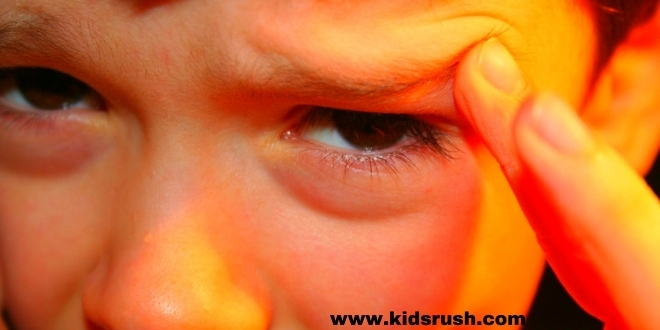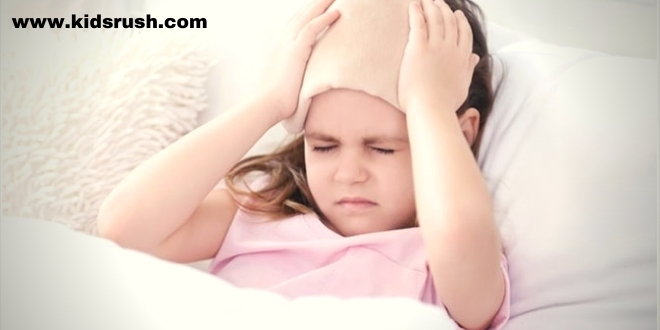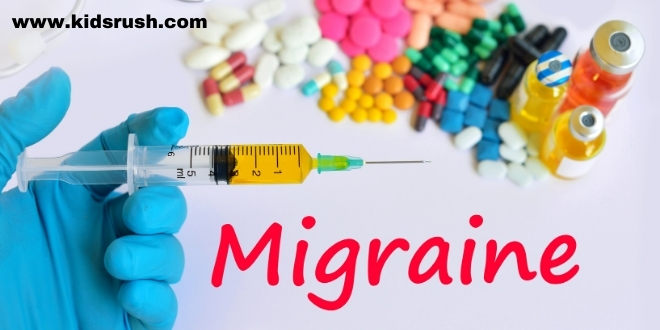Migraine in children is debilitating and can interfere with your daily tasks. This condition is even a cause of poor school performance. How to recognize it?
Migraine is very common in children and, in fact, it can occur at any age. According to statistics from the Migraine Research Foundation, about 10% of school-age children suffer from migraines, and up to 28% of adolescents between 15 and 19 years of age are affected by it.
This type of headache is usually debilitating and can conflict with daily movements. In the case of children, it can cause certain negative effects that decrease both their school performance and their social aspect.
While children generally have fewer seizures than adults, this condition can be just as disabling. Even without treatment, it can significantly affect the child’s quality of life.
Symptoms of migraine in children

Two forms of migraines are distinguished; episodic, which occurs sporadically; and chronicle. Next, we will mention the typical migraine attacks, but we must clarify that these may be different from those described in adults.
Sometimes, due to their age, it will not be easy for children to identify, much less put into words, the sensations perceived. Migraines are of moderate to severe intensity and are accompanied by other symptoms.
They unfold through a cascade of events that occur over the course of hours to days. A typical migraine attack without aura progresses through three phases; the premonitory phase, the headache phase, and the post- migraine phase.
Read Also: Helping Children With Attention Deficit
Symptoms associated with the premonitory phase include the following:
- Nausea and vomiting
- Pain behind one eye or ear
- Pain in the temples
- The sensation of seeing spots or flashing lights
- Sensitivity to light or sound
- Temporary loss of vision
- Paleness or shadows under the eyes
- Humor changes
They can appear hours, or even a day, before the start of the painful phase. The pain will generally affect the head bilaterally, unlike in adults, where it will only be on one side of the head. It can be sharp and make it difficult to perform daily tasks.
Read Also: Strep throat in children
Attack with aura

The aura attack will be an additional phase that can occur before or with a headache. The aura, when it develops, is usually visual, like sparkles. Young children may be unable to express complaints about headaches.
Therefore, symptoms appreciated by caregivers include paleness, decreased activity, and vomiting. The post-migraine phase will be characterized by a state of exhaustion.
In addition to the physical symptoms, some children may develop anxiety, fearing that another painful attack is about to happen. This is called anticipatory anxiety, and it will alter your ability to focus at times when you are not in pain.
In a small percentage of children, the form known as chronic migraine will occur, which we mentioned previously. This is defined as pain that occurs 15 or more days per month, lasting more than 4 hours, for more than 3 months.
Read Also: Dengue in children: symptoms, causes, and treatments
Treatment of migraine in children

Patients will typically want to lie down in a quiet, dark room and can get relief from sleep. Useful medications for acute migraine treatment range from common pain relievers. like ibuprofen and paracetamol, even triptans.
It may be necessary to try various medications to find the most effective treatments for individual patients. The sooner drugs are given, the more effective they will be. Sometimes an antiemetic can help.
There is no absolute cure for migraines, as its pathophysiology is not yet fully understood. Keeping track of your personal migraine triggers can provide helpful information to avoid them. This can include the following:
- Dietary considerations
- Hydration
- Stop certain medications
- Establish a consistent sleep schedule
Read Also: Baby fontanelles: Everything you need to know
General considerations
The presence of migraine in children will be a cause of anxiety both in the little ones and in their parents or caregivers. It is always suggested to go to the doctor, in search of an accurate diagnosis and the appropriateness of the treatment.
Ensuring that the child gets enough sleep and exercise, as well as providing a complete and varied diet, will also help prevent migraines.
